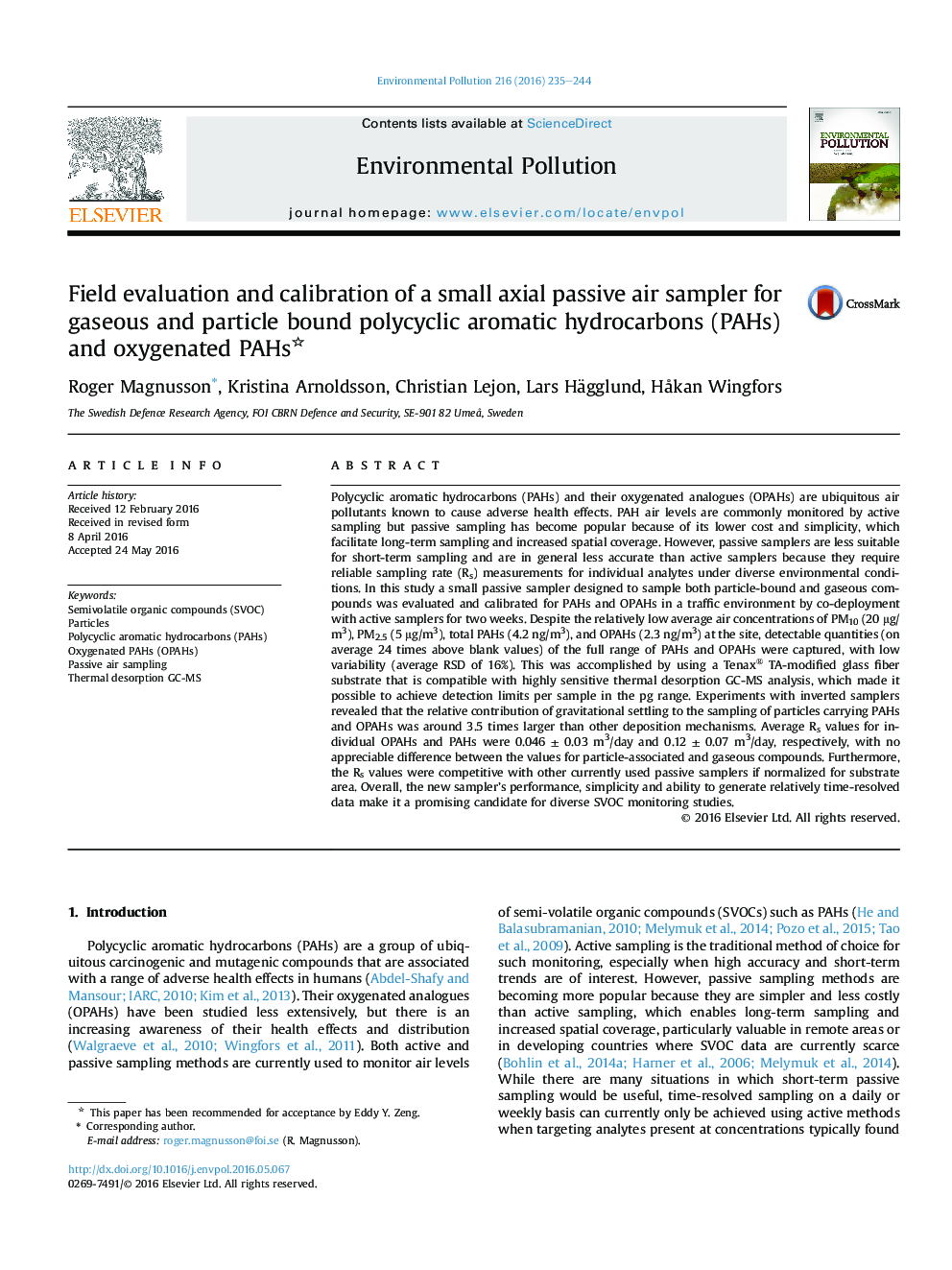| Article ID | Journal | Published Year | Pages | File Type |
|---|---|---|---|---|
| 6315808 | Environmental Pollution | 2016 | 10 Pages |
Abstract
Polycyclic aromatic hydrocarbons (PAHs) and their oxygenated analogues (OPAHs) are ubiquitous air pollutants known to cause adverse health effects. PAH air levels are commonly monitored by active sampling but passive sampling has become popular because of its lower cost and simplicity, which facilitate long-term sampling and increased spatial coverage. However, passive samplers are less suitable for short-term sampling and are in general less accurate than active samplers because they require reliable sampling rate (Rs) measurements for individual analytes under diverse environmental conditions. In this study a small passive sampler designed to sample both particle-bound and gaseous compounds was evaluated and calibrated for PAHs and OPAHs in a traffic environment by co-deployment with active samplers for two weeks. Despite the relatively low average air concentrations of PM10 (20 μg/m3), PM2.5 (5 μg/m3), total PAHs (4.2 ng/m3), and OPAHs (2.3 ng/m3) at the site, detectable quantities (on average 24 times above blank values) of the full range of PAHs and OPAHs were captured, with low variability (average RSD of 16%). This was accomplished by using a Tenax® TA-modified glass fiber substrate that is compatible with highly sensitive thermal desorption GC-MS analysis, which made it possible to achieve detection limits per sample in the pg range. Experiments with inverted samplers revealed that the relative contribution of gravitational settling to the sampling of particles carrying PAHs and OPAHs was around 3.5 times larger than other deposition mechanisms. Average Rs values for individual OPAHs and PAHs were 0.046 ± 0.03 m3/day and 0.12 ± 0.07 m3/day, respectively, with no appreciable difference between the values for particle-associated and gaseous compounds. Furthermore, the Rs values were competitive with other currently used passive samplers if normalized for substrate area. Overall, the new sampler's performance, simplicity and ability to generate relatively time-resolved data make it a promising candidate for diverse SVOC monitoring studies.
Related Topics
Life Sciences
Environmental Science
Environmental Chemistry
Authors
Roger Magnusson, Kristina Arnoldsson, Christian Lejon, Lars Hägglund, HÃ¥kan Wingfors,
